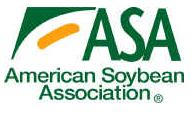 ASA’s 2012 Farm Bill Proposal: “Risk Management for America’s Farmers”
ASA’s 2012 Farm Bill Proposal: “Risk Management for America’s Farmers”
Savings Would Be Used for Agriculture’s Share of Deficit Reduction
By American Soybean Association
September 29, 2011…Saint Louis, Missouri…The American Soybean Association released its proposal for the 2012 Farm Bill, “Risk Management for America’s Farmers.” “This proposal will help farmers manage the risks they face from adverse weather, crop disease, and volatile commodity markets,” stated ASA President Alan Kemper, a soybean producer from Lafayette, Ind. “ASA believes the current farm program safety net can be made more effective, efficient, and defensible by reallocating baseline funding to this revenue-based program that improves risk management and complements crop insurance,” Kemper added. Because the proposal would replace current farm programs, this proposal would also result in savings that help agriculture contribute its fair share to deficit reduction.
The “Risk Management for America’s Farmers” program, or “RMAF,” would partially protect revenue losses by farmers of soybeans and other program commodities that result from low prices or reduced yields for their crops. The program would establish commodity-specific revenue benchmarks for individual farmers based on historical yields and prices, and compensate them for part of the difference when current-year revenue for a commodity on their farm falls below a percentage of the benchmark. All planted and prevented planted acres would be covered under the plan. The program would complement the existing crop insurance program used by most farmers, which ASA strongly supports and believes should be continued. More details on the plan can be found on ASA’s website at www.soygrowers.com/policy/ASA-RMAF.pdf
“ASA supports a risk management program that partially offsets shallow revenue losses at the farm level not covered by crop insurance,” said ASA Farm Bill Task Force Chairman Rob Joslin, a soybean farmer from Sidney, Ohio. “Farmers told ASA that they want a program that operates off a farm-level revenue loss trigger rather than a state, Crop Reporting District, or even county loss trigger. Farmers told us that the use of a state-level revenue loss trigger in the current Average Crop Revenue Election (ACRE) program was one of the problems they saw in that program that resulted in low participation rates. I want to thank the members of ASA’s Farm Bill Task Force, who were from all soybean growing regions, for their work in listening to their fellow producers and for crafting this risk management proposal,” concluded Joslin.
According to Kemper, “Preliminary indications are that RMAF could cost significantly less than the existing ACRE, the Supplemental Revenue Assistance Payments Program, Direct Payment, and Counter-Cyclical programs, resulting in savings that can be used to meet part of agriculture’s share of deficit reduction required by the Budget Control Act.” Kemper added that “while ASA strongly supports federal support for on-farm conservation practices, given the cost of these programs, we believe they need to be included in helping to meet agriculture’s share of deficit reduction. Thus, for that for that portion of spending cuts that does not come from other farm bill titles, ASA is suggesting spending reductions should come equally from commodity and conservation programs.
“ASA supports efforts to address our Nation’s debt through a comprehensive and balanced approach to deficit reduction that includes cuts to all areas of Federal spending,” said Kemper. “Farmers are willing to do their fair share to contribute to these efforts, but cuts to agricultural spending should not be disproportionate.” The ASA President concluded his remarks by emphasizing that “federal crop insurance is the core of agriculture’s safety net, and has already contributed to deficit reduction. ASA will strongly oppose any proposal to further reduce crop insurance funding.”
ASA represents all U.S. soybean farmers on domestic and international issues of importance to the soybean industry. ASA’s advocacy efforts are made possible through the voluntary membership in ASA by over 21,000 farmers in 31 states where soybeans are grown.
Disclaimer: Articles featured on Oregon Report are the creation, responsibility and opinion of the authoring individual or organization which is featured at the top of every article.

